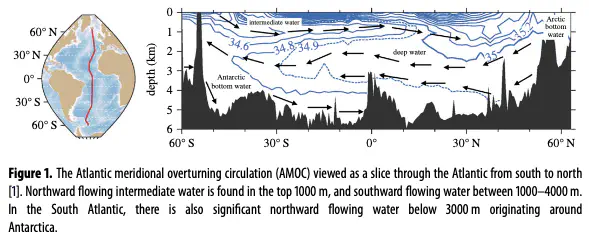
Abstract
The Atlantic meridional overturning circulation (AMOC) is a large-scale circulation pattern responsible for northward heat transport in the Atlantic and is associated with climate variations on a wide range of time scales. Observing the time-varying AMOC has fundamentally changed our understanding of the large-scale ocean circulation and its interaction with the climate system, as well as identified shortcomings in numerical simulations. With a wide range of gains already achieved, some now ask whether AMOC observations should continue. A measured approach is required for a future observing system that addresses identified gaps in understanding, accounts for shortcomings in observing methods and maximizes the potential to guide improvements in ocean and climate models. Here, we outline a perspective on future AMOC observing and steps that the community should consider to move forward.